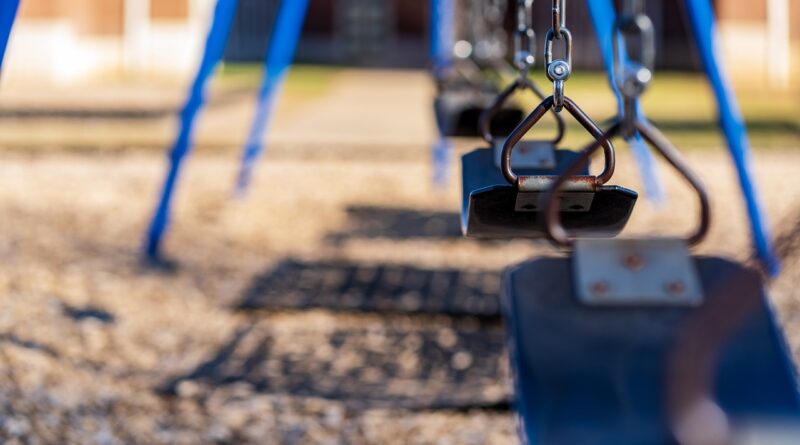TEA Gets Pushback on Back-to-School Guidance
After tapping the brakes last month, the Texas Education Agency released its guidance for districts Tuesday afternoon – but many say the guidance is not specific enough, and that it’s too soon to say schools will open at all.
“Both as commissioner and as a public school parent, my number one priority is the health and safety of our students, teachers, and staff,” said TEA Commissioner Mike Morath. “That is why the guidance laid out today will provide flexibility to both parents and districts to make decisions based on the ever-changing conditions of this public health crisis. The state is and remains committed to providing a high-quality education to all Texas students, while ensuring the health and safety of students, teachers, staff, and families.”
The guidance mandates certain things that were merely suggestions in draft documents released last month, right as cases began a new upward trajectory. They reflect, for instance, that nobody’s quite sure what school will look like next year for certain.
Last week, at a town hall at a Houston ABC affiliate, Gov. Greg Abbott acknowledged that school may not actually start on campus in the fall.
“We want to start schools on time as scheduled,” Abbott said. “If we continue to see COVID spreading the way that it is right now, it may be necessary to employ that flexibility and use online learning.”
Also at play is President Donald Trump’s assertion that on-campus instruction will begin in the fall, and U.S. Education Secretary Betsy DeVos’s mandate that districts offer on-campus instruction five days a week, all day.
“It’s clear that our nations schools must fully reopen and fully operate this school year. Anything short of that robs students, not to mention taxpayers, of their future,” DeVos said Tuesday.
The TEA’s document spans nine pages, and delineates safety requirements for districts. The guidance also requires districts to offer on-campus instruction but also offer virtual options.
A press release announcing the guidance says that parents can choose remote learning at the beginning or at any point during the school year.
“Parents who choose remote instruction for their students may be asked to commit to remote instruction for a full grading period (e.g. 6 or 9 weeks), but will not have to make that commitment more than two weeks in advance, so they can make a decision based on the latest public health information,” the press release said.
The new guidance requires schools to comply with any of Abbott’s orders that may be in place during the school year.
“Consistent with the governor’s most recent executive order, and assuming that order is still in place, masks will be required while in school buildings, with certain exceptions made, as noted in the order,” the press release said. Abbott’s current mask order applies to anyone 10 years of age and older, with a few exceptions made for certain circumstances, which means that roughly all pre-K through fourth-grade students would not be required by the state to wear a mask – although school districts possibly could ask them to.
The TEA’s guidance requires school districts to ask teachers and staff to self-screen for COVID-19 symptoms prior to coming to school, and all visitors must be screened as well.
Districts will be given the option of phasing-in on-campus instruction over the first three weeks of the school year, too.
Some of the additional provisions include:
- Students and teachers must stay home if they have symptoms or a positive test, and if they do have a positive test, they must stay home throughout the entire time they’re infected, and must be fever-free for at least three days, have improved symptoms, and it must have been at least 10 days since they began having symptoms;
- Students with symptoms while at school must be picked up immediately by a parent or guardian, and must be separated from the rest of the school;
- If the school has a confirmed case, all areas that were heavily used by the student, staff member, or teacher must be closed off until the areas can be cleaned, unless it’s been more than three days since the individual was on campus. All teachers, staff, and families of students must be notified of confirmed cases involving people on campus.
Dallas ISD Superintendent Michael Hinojosa told NBC-DFW that the return to campus was a complex issue, and the state has been telling the district for some time to be prepared for five-day rolling shutdowns during the school year as cases of COVID-19 spike.
He said elementary school students will be expected to wear face shields if they are learning on-campus this fall.
“We’re not going to get in a tussle with a family, but we’re going to expect it,” Hinojosa said.
Highland Park ISD held a series of town halls for parents last month, and has set up a website to keep families informed of how the new school year will look.
“Every decision made will take into consideration the latest guidance and direction from local, state and federal authorities,” the district’s most recent statement said. “The state announced previously that, regardless of final guidance regarding in-person instruction, school districts will be required to offer instruction remotely to students whose parents request it. HPISD will make this option available to parents later this summer once more details become available.
“If and when students return to schools for instruction, HPISD will increase safety protocols to limit exposure, including enhanced cleaning, hand sanitizer stations, and adjusted schedules. The district is preparing for a virtual option for all students should the need arise.”
Highland Park ISD’s committee includes school board members Lee Michaels and Tom Sharpe, Superintendent Tom Trigg, Dallas County Health and Human Services Chief Epidemiologist Dr. Wendy Chung (who is also an Highland Park ISD parent), all school principals, and other district administrators.
Reaction from parents, teachers, and various advocacy groups has been immediate and overwhelmingly against the current guidance.
The Association of Texas Professional Educators said the TEA’s guidance was too vague and had too many gaps.
“ATPE is frustrated that TEA has not heeded our call to provide more explicit guidance, nor is TEA requiring the involvement of educators and parents in developing COVID-19 protocols,” the organization said.
“Too many questions are left unanswered in TEA’s guidelines,” said Shannon Holmes, ATPE Executive Director. “We urge school district leaders to step in and fill this leadership vacuum to keep Texas children and educators safe, particularly as pockets of our state face rising COVID-19 outbreaks. All Texas students, parents, and educators deserve to be safe and have a firm understanding of the steps being taken to provide a safe learning environment.”
The Texas State Teachers Association called the call to return to campus next month “too soon.”
“Texas obviously has not seen the end of this pandemic, and no one knows what August, the normal start of the fall semester, will bring,” Texas State Teachers Association President Noel Candelaria said. “Regardless of the date, no school must reopen until the pandemic has clearly begun to subside and strict safety standards are in place for that campus, including required mask use for students, employees and visitors; regular testing of everyone entering the school for COVID symptoms; and strict social distancing in classrooms and other locations.”
On the TEA’s Facebook post regarding the guidance, almost 3,000 comments ranged from encouraging teachers to join a union, to demanding that the state cancel the STAAR test one more year.
“I’ll go back to my classroom as soon as TEA employees are forced to work in person, too,” one commenter said, alluding to the notice on the TEA website that explains that the agency’s office is currently closed and employees are working remotely.
When Dallas ISD school board trustee Dustin Marshall shared the news on his Facebook page, many questioned how that would work with schools as large as Dallas ISD’s.
“I can’t imagine how the large campuses are going to fair: Skyline, Molina, Bryan Adams & WT White. Those campuses have between 2,000-4000+ students each on campus. Staff will get sick and some will quit, who watches the students if the adults are sick?” one person asked.
“This is horrifying,” another said.









